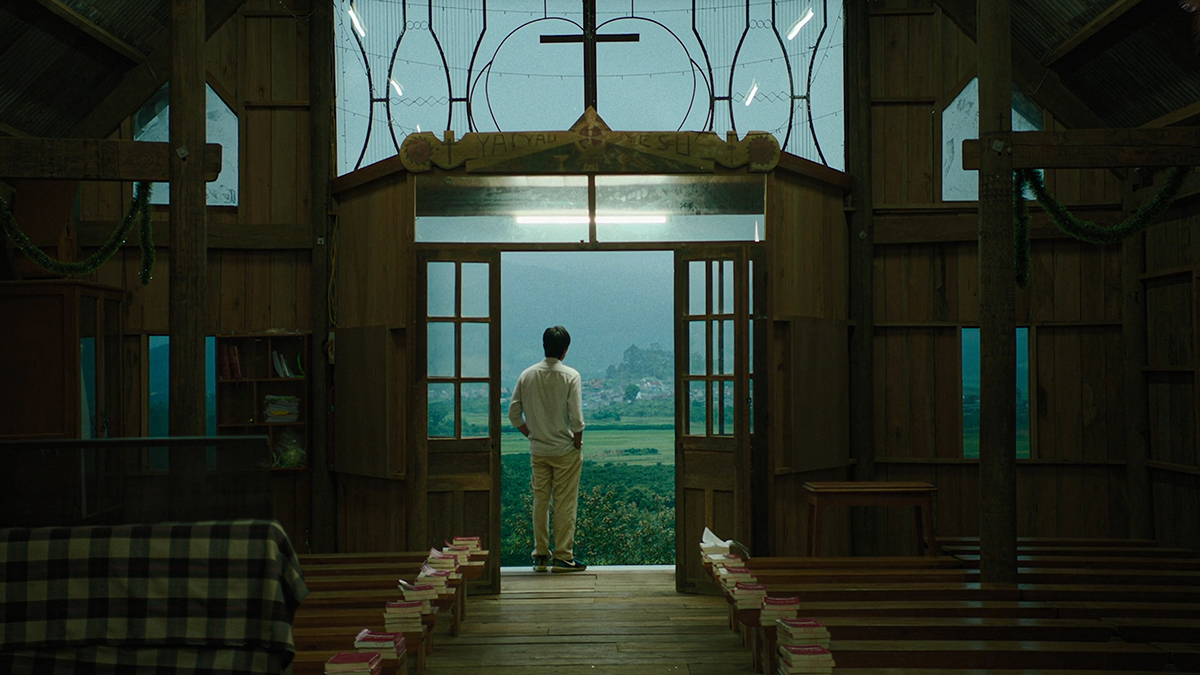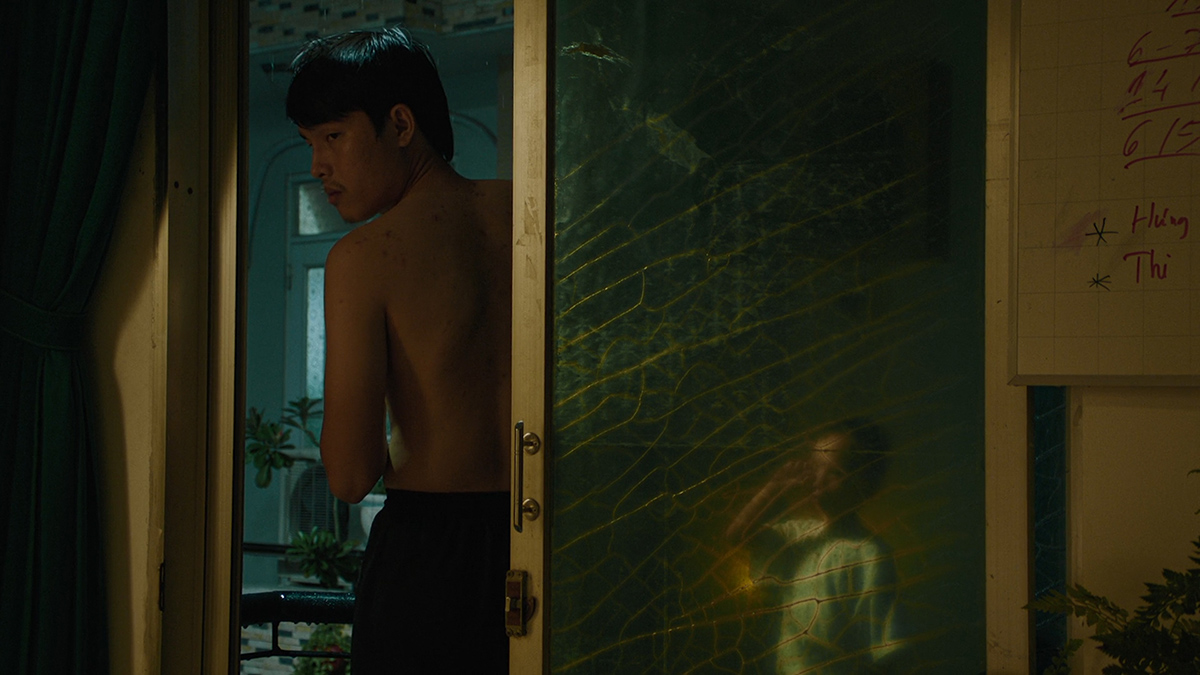Between Metamorphoses: Phạm Thiên Ân on Inside the Yellow Cocoon Shell

Critics Campus 2023 participant Đăng Tùng Bạch speaks to Phạm Thiên Ân about the making of his Caméra d’Or–winning film and the roles played by location, sound and time in his work.
Inside The Yellow Cocoon Shell (2023), the debut feature by Phạm Thiên Ân, is as gentle as it is haunting, like a lingering dream. Blending slow cinema with realism and a touch of magic, the film invites us to float through the misty landscapes of rural Vietnam to follow Thiện (Lê Phong Vũ), an aimless man on a journey set off by his sister-in-law’s death.
Before you started filmmaking, you studied IT at university. How did cinema find its way to you?
I never graduated … There was this one subject that I kept failing! Had I passed that subject, I would have started work at some company. But, without a degree, nobody hired me. At the time, my family was planning to migrate to America, so I started training to be a barber. It was a … dark time for me. I didn’t know what I was doing. So I tried something new, something that blends technical expertise with creativity: I learned how to edit videos.
Later, I found work as a wedding videographer. I worked for a company, and they taught me neat things like camera shots, camera movements, composition and structure – stuff like that. I was with them for four years, and then I started my own company with some friends. After a while, wedding videos became repetitive and limited, so we wanted something more interesting. Cinema became my calling.
My friends and I made our first short film without really knowing what we were doing. And I submitted the film everywhere! I didn’t know anything about festivals other than by their names – no clue at all. But getting rejected taught me valuable lessons. I learned a lot from watching other films, and I learned about funding and everything too. It took a while, but we had the ball rolling after some short films. And then Inside The Yellow Cocoon Shell was made.
The character Thiện in the film is a wedding videographer who lacks a sense of direction in his life. How did you approach blending autobiography with fiction to create your main character?
Well, I don’t want to think that Thiện was the main character. We follow him, but he’s not the focal point. Despite the character being closely based on my own experiences, I was more interested in the people that he encounters. Thiện leads us towards different walks of life, different stories, different souls that enrich ours and his as well. The film is a journey, after all. Thiện changes at the end, [and] we do too – I hope so.
To me, Thiện was like a blank page that I could put myself on. He’s like a proxy that we use to enter this dreamlike world.
That’s a good way to put it. Thiện is a blank page – or canvas, perhaps? I wanted to paint a picture with all these different colours and brush strokes, and Thiện was my canvas … and time is the paint!
What mattered to me most was the flow of time. I wanted Lê Phong Vũ to be constrained by the rhythm of the film. His performance needed to have a precise sense of time, so we had to go through a lot of fine-tuning to work out details like the intensity of the emotions and the speed at which the dialogue was delivered. We were amateurs in those aspects, and I had to try to maintain the film’s consistency in the editing.

Inside the Yellow Cocoon Shell
What interests me is the world you painted. Death is at the core of the film, and yet every shot is teeming with life. How did you create this world?
I didn’t! The world was already there for me: the misty mornings; the muddy roads after the rains; bumpy roads with buffaloes and children playing around.
The rural landscapes have a life of their own, and they were instrumental to this picture I was painting. And so they had to have a prominent presence in the film. Dialogue and action were even rewritten to accommodate that. Most of the film was shot in Bảo Lộc, where I am from, and I took my time scouting the locations and surveying the buildings in that area. The rest was shot in Saigon. I must admit that we were extremely lucky that all the locations we found worked out for us: the weather; the camerawork; the performances. It was a miracle – I could not stress that enough. We were very lucky.
After deciding on locations, the process was about striking a balance between taking in what is given to us and retaining our own specific vision. I didn’t know it at the time, but that was what I learned. I do things based on intuition, you see! And I am glad the world is vivid and detailed.
Sound really stands out in the film.
Spot-on! I had everything planned out for the post-production pipeline in terms of sound. Funny thing: I actually own a lot of the sound equipment that we used …
I was meticulous with that. I wanted every interesting sound to be heard: doors opening, doors closing, lights switching on and off, water trickling, leaves rustling, even the flipping of the pages. Sound expands the world in many directions. I did some recording myself, and I was lucky that our sound recordist has a good ear as well.
I’m a very hands-on person. I try to have control over many aspects of the film – I did the editing myself, too. I don’t have a lot of knowledge in terms of artistic devices in films and things like that. I know other Vietnamese filmmakers who excel at that kind of … audiovisual literature. But I’m a technical-heavy kind of director.
This year’s Cannes Film Festival was quite special for Vietnamese cinema. You won the Caméra d’Or 30 years after Trần Anh Hùng won the same award for The Scent of Green Papaya (1993). And he also won Best Director at the festival this year! It was so poetic, don’t you think?
I found it hard to think that Inside The Yellow Cocoon Shell could make it to the Cannes Film Festival, let alone win anything. It was difficult to believe that we won the Caméra d’Or, even when I was holding the award on that stage; it did not hit me until much later what the award meant for the history of Vietnamese cinema. I can’t put it into words, but it felt special.